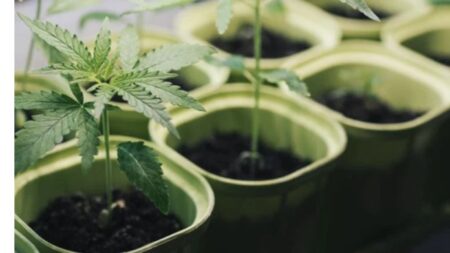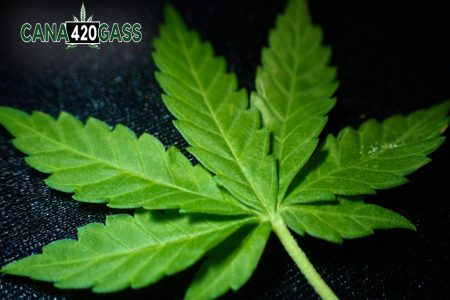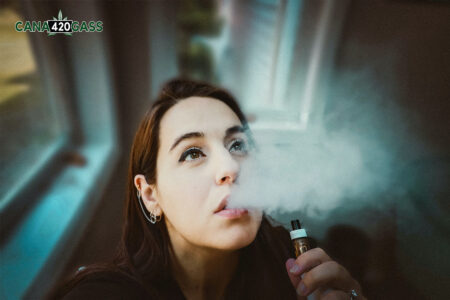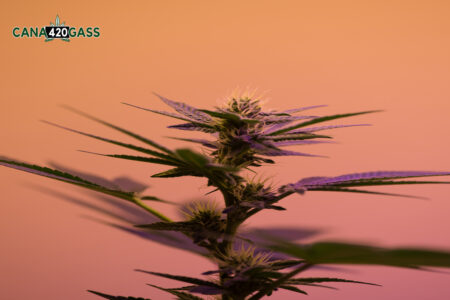Different Types of Cannabis Concentrates:
Cannabis concentrates, or marijuana concentrates, are concentrated THC and CBD extract from cannabis flowers. It contains many active compounds, such as cannabinoids and terpenes. Additionally, concentrates are packed with cannabinoids several times more than average dried flowers, and their potency can reach up to 90 percent. Consuming marijuana using its buds or flowers directly gives way to other forms of consumption, such as concentrates. Although combustion is the majority alternative, different formulas are available to consumers for their consumption. Trichomes contain all cannabinoids and terpenes.
Therefore, they are the plant’s essence and provide all the medical and recreational value.
Marijuana concentrates are created through a process called extraction. Extraction is simply removing the resin from the buds and leaf matter. The purer the resin has been extracted, the higher the concentrate’s purity, quality, and medical efficacy. If consumed carefully and in moderation, concentrates can be used safely by both medical and recreational users.
Cannabis concentrates by separating the resin from the flowers to extract the maximum amount of cannabinoids and terpenes, removing unnecessary plant material. Cannabis resin contains trichomes, small growths on the flowers where most of the plant’s cannabinoids and terpenes are synthesized. Of course, the more trichomes a plant has, the higher the potency of the final product.
How to consume hashish?
Hash can be smoked, although you can also ingest it in an edible by decarbonizing it. If you’re trying to avoid smoking (or don’t like it), we suggest quickly baking hash brownies, which are always a good option.
If you prefer to smoke it, here are some ways to do it:
- Please place it in or around a joint.
- You can smoke Hash with a bong or in a pipe.
CONCENTRATED, HEALTHY CHOICE
Concentrates are truly a healthy alternative. By eliminating plant matter from the equation, consumers find the extraction of a purer substance, mainly in cannabinoids. That is why smoking or vaping extracts should not arouse alarmism. Don’t be fooled by widespread ignorance about best concentrates. While cannabis buds typically contain 10 to 20 percent THC, concentrates can offer 60 to 95 percent THC. So vaping and smoking it is much more efficient and productive. It makes marijuana concentrates a significant choice for patients for medical use.
CONCENTRATES 1: MARIJUANA OIL
Cannabis oil has garnered media attention for helping people with epilepsy. Also, for cancer patients, especially children, it is a particular extraction method. You can create cannabis oil through a variety of extraction methods. All of which produce concentrated products of varying levels of quality and potency.
Of course, if you use poor-quality marijuana to create a concentrate, the result will never be that good. That is why taking advantage of a superior medicinal variety with a high percentage of THC, CBD, or both is advisable. Without a doubt, the most widely used marijuana concentrates today.
CONCENTRATES 2: SOLVENTS OR SOLVENTS
Common extraction methods involve solvents, including butane, CO2, ethanol (grain alcohol), isopropyl alcohol, and propane. Solvents are chemical agents that remove resin from plant and leaf matter, collecting and concentrating cannabinoids and terpenes. Some extraction methods, especially those related to butane, leave solvent residues in the final product, even in small amounts. It’s a health concern and can affect the taste and aroma of marijuana concentrate.
Weed concentrates are available in a wide variety of consistencies depending on the solvent and the process used. Some are sticky, thick oils, while others produce a stiff, hard (like shatter) material. Taking advantage of experience or consulting a dabbing expert is necessary to determine the most pleasant consistency.
DABBING
Dabbing involves applying a small amount of marijuana concentrate on a hot surface. It creates a dense substance and vaporizes and inhales the produced white vapor. Because it is not about actual combustion, Dabbing is considered a harm-reduction strategy that is safer and healthier than smoking.
Dabbing combines the act of vaporizing marijuana, which can be achieved with a desktop or pocket vaporizer, with the world of concentrates. Pure concentrates on its recreational and youth cultural roots. Dabbing is an effective route to ingesting medical cannabis, causing more potency with minimal consumption. A small amount of a potent concentrate, vaporized by dabbing, can be equivalent to smoking a medium weed joint but in no time.
DAB RIGS
Necessarily, Dabbing involves vaporizing marijuana concentrates. Therefore, bongs and pipes that are suited to cannabis buds are not designed or appropriate for concentrates. Thus, the popularity of glass bongs specialized in consuming these concentrates, such as shards, wax, and live resin and called DAB platforms arose.
The heating surface used in DAB rigs is constructed from various materials, including titanium and quartz. These are used to reach and maintain the high temperatures necessary for the effective and complete vaporization of marijuana concentrate. Titanium is a waterproof material that can be broken by falling and is the most expensive way to equip a sole platform (this is what this concentrate is called). Quartz, however, is cheaper and can also break easily.
PAN, NAILS, AND BANGER
Three of the most common platforms for these soles are pans, nails, and bangers. The pans, the oldest and least popular of the three, involve a heated pad with a torch or other device. There it reaches a sufficiently high temperature. A tiny sample of marijuana concentrate is taken and placed on the platform. The user inhales the vapor at that moment using a plastic or glass straw. This process’s timing is critical to avoid the loss of the cannabinoid- and terpene-rich smoke created the instant the concentrate hits the pan.
Nails were the norm a few years ago, when dabbing gained popularity, and they are more sophisticated and convenient than pans. They are typically made of titanium, glass, or quartz and designed to slide a rig-bong sole down the tube. Like frying pans, nails require a source of heat, such as a torch. Although they are considered superior to pans for many users, nails have declined in popularity. They were replaced by today’s most popular Dabbing surface, the firecracker or banger.
BANGER
The banger is a titanium, glass, ceramic, or quartz bowl. Their standard sizes are 10, 14, and 18 millimeters. Available in various sizes and shape factors, they are undoubtedly the most convenient and attractive for the “Input Devices” sole platform. Some dab rigs involve nails that employ coiled electronic heating elements called e-nails. Many consumers prefer these nails because of their ease of use and less danger than flames.
The e-mails also prevent the concentrate from overheating, a common problem that will reduce the dabbing experience’s quality. On Dab platforms, you can also rub utensils called “dabbers.” While some can buy expensive and exotic knives, many other dabbing fans use something as straightforward as a crochet hook or dental probe. Borosilicate glass is highly recommended for the sole pad due to its ability to expand and contract. Plus, it handles the high levels of heat needed to vaporize a marijuana concentrate properly.
Dab platforms that increase steam diffusion (with special notches and formations in the glass) result in smoother and more pleasant accesses. The temperature of the nail or banger is critical. Some experts recommend starting at around 650 degrees Fahrenheit (343 degrees Celsius), while others advise a temperature of 600 to 700 degrees Fahrenheit. Higher temperatures can lead to the degradation of the terpenes in the concentrate. That affects the taste, aroma, and even medicinal efficacy.
Many terpenes act similarly to cannabinoids and synergistically interact with them, so many should be conserved as possible. Using a torch as a heat source can be tricky and requires some practice to get the temperature right. Electronic nails can set the exact temperature, as can many conventional desktop vaporizers intended for this purpose.
KIEF
Also known as “dry sieve” or “pollen,” it is one of the oldest forms of cannabis concentrates and dates back thousands of years. In its purest form, Kief is just trichomes, without plant matter. The “Kief Connoisseur” grade comprises only the trichomes’ heads, with none of the almost microscopic stems. Kief is the simplest of concentrates. It is quickly and safely produced in the home and does not involve solvents, heat, complex procedures, or chemical reactions.
It can range in color from yellow to green to gray or brown, depending on the mix’s amount of non-trichome plant matter. Kifi is typically created by separating trichomes from plant matter using a kiefing board or tapestry. Also, another device is composed of a particular filter screen. They can even be harvested using a three-chamber bud grinder with a similar screen. Screens allow trichomes to fall through a collecting plate or chamber.
Theoretically, it prevents any piece of leaf, pistils, or material other than trichomes from passing. Due to its dusty nature, Kief is not appropriate to dry. It can be smoked or vaporized directly or by garnishing a joint of marijuana buds to enhance its flavor and potency. It all depends on the quality of the cannabis flowers, the equipment used, and the person’s competence in making the Kief. The result could range in potency from around 20 percent THC to over 60 percent.
CONCENTRATES 3: CLASSIC AX
Traditional hashish or “chocolate,” also called “pressing,” is when the plant’s trichomes are separated and compressed, often by hand. It creates a mass of resin resulting from crushed trichomes. Depending on the harvesting technique used and the quality of the cannabis used, a hash can result in different colors. They range from yellow to dark brown and even black (depending on the plant and foreign matter in the final product). Examples of hashish include “bubble hash” and “full melt hash.” Some of the best old-school Hash comes from Afghanistan, Lebanon, Morocco, and India.
WATER HASH OR BUBBLE
Bubble or water hash involves its leaves or buds, usually leaf trimmed in ice water. It causes the trichomes to become brittle, and after a slight physical shaking, they fall off. The optimal way would be to collect only the heads falling to the ice water tank’s bottom and dry out. This Hash is not considered higher quality than solvent-based extraction processes. However, a water-based hash can be very potent.
Technically, ice water acts as a solvent. A popular product for creating a bubble or water hash is bags. This shape involves a series of bags that feature different pores’ densities, becoming finer as the process progresses. That determines the variety of qualities. You can easily create water hash by home growers inexpensively and with relatively little effort.
It also does not carry any dangers of creating butane hash oil and is optimally made in a professional laboratory under strict conditions.
There are several types of Hash:
- Bubble hash: made by separating the trichomes with ice water.
- Lebanese hashish is made by drying flowers, rubbing them with a piece of cloth, and pressing the material.
- Royal Afghan Hash – (also known as Royal Border) – Made by placing flowers in water or tea to separate the resin and pushing it into slabs.
- Moroccan hashish: made with dry sifted cannabis flowers.
CONCENTRATES 4: BOHO
Butane Hash Oil, or BHO for short, is the most popular form of cannabis concentrate in the United States. Also known as “honey oil,” it is available in various forms, including crumble, pearl, glass, honeycomb, shard, budder, wax (cerumen), and sap. There you can also find the famous shutter or wax. BHO is the standard form for many people who consume it. Typically, a BHO concentrate resembles a “chewy” (gum) or peanut butter (peanut) shape.
There are two main concerns with this BHO. First, the process by which it is made involves a highly volatile and potentially explosive substance (butane). Second, any butane residue left in the final product is unhealthy. Patients who consider BHO a form of medicine should carefully choose the appropriate brand or manufacturer (in US states, legally sold). Trained technicians must operate facilities and laboratories employing professional equipment.
CONCENTRATES 5: OIL BY CO2
Carbon dioxide (CO2) oil, usually amber in color, is a healthier alternative to BHO. However, we can produce it using costly botanical extraction equipment found in professional laboratories. As the name implies, the creation of oil by CO2 involves carbon dioxide at very high pressure, a process called supercritical fluid extraction, or SFE. Supercritical fluids are unique in that they exhibit the properties of both a gas and a liquid.
Therefore, CO2 diffuses through solids (as a gas), but compounds also dissolve (as a liquid). It means that it quickly permeates the cuticle or “skin” of the trichomes, allowing you to extract all of the resin thoroughly. CO2 oil is perfect for use in vaporizers and other similar applications. Although less common than BHO, this CO2 oil is healthier and more comfortable to control. It also contains more terpenes than BHO, giving it a more impressive “terpene profile.” For example, BHO typically offers 0.5-3.5 percent terpenes (by mass). Oil per CO2, by contrast, contains 8-10 percent terpenes.
CONCENTRATES 6: TINCTURES
Tinctures and classic Hash are the oldest forms of marijuana concentrates. Until the 1937 prohibition of cannabis by the United States Government, cannabis tinctures were shared on the walls of pharmacies throughout North America and Europe. A tincture is simply a liquid concentrate derived from alcohol extraction.
Tinctures offer ease of consumption that does not involve heat. Besides, children or pets can flavor it for medicinal purposes. Because they are concentrated, only a few drops of a good tincture placed under the tongue are necessary to obtain a total dose. It is more common for medical treatments than for recreational use. We can create safe medicines by using the buds and simply soaking them in grain alcohol for one to four weeks. Of course, it all depends on the desired results and the quality of the plant.
CONCENTRATES 7: LIVE RESIN
Live resin is one of the newest marijuana products. It is a concentrated concentrate extracted directly from a freshly harvested cannabis plant that has been cryogenically frozen. That is, instantly cut with an application of shallow temperatures. THC concentrates are unique in that it eliminates the drying process. Conventional buds are dried and cured. Depending on the variety and the environment, you can consume it between 20 and 70 days. This resin offers a “fresh” alternative to conventional weed and a new twist on typical marijuana concentrates. In marijuana harvesting, the drying process wreaks havoc on the beloved terpenes and cannabinoids, adversely affecting flavor and aroma.
Live concentrate offers a unique way to enjoy the full taste of cannabinoids and terpenes.
That is what Denver-based concentrate specialist DabTek thinks: “Through a precise extraction process, you can produce a true world-class concentrate.” “The effect and taste of the live resin preparation is absolutely, and unprecedented, a true representation of expert finesse.” Live resin offers two main benefits: better flavors and a complete terpene profile. Terpenes do more than provide aroma. That is why this process is arguably superior for capturing and delivering maximum medical efficacy for a particular strain of cannabis. The only downside to this live resin is that it is relatively rare and expensive.











